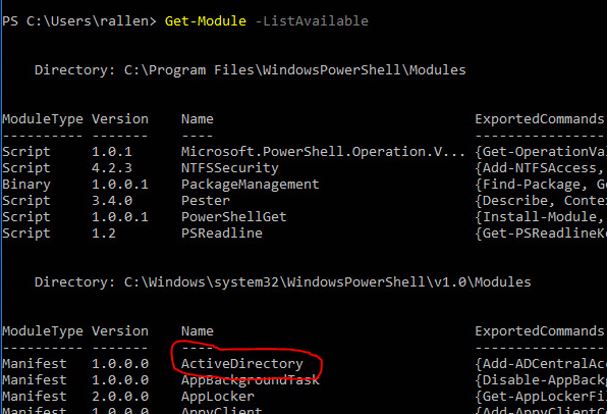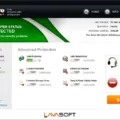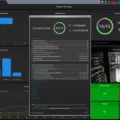Exporting Active Directory Group Members can be a time-consuming and tedious task. But with the right tools, it can be made much easier. In this blog post, we’ll walk you through the steps to export Active Directory group members using PowerShell and Netwrix Auditor.
Step 1: Load the Active Directory Module
Before you can export AD group members, you need to make sure that the Active Directory module is loaded in your system. To do this, open PowerShell and type in “Import-Module activedirectory”. This will load the necessary cmdlets for working with AD groups.
Step 2: Find AD Group
Once the module is loaded, you can use Get-AdGroup to search for a specific group within your domain. For example, if you want to find out which users are in the “Accounts” group, type in “Get-AdGroup -Filter { Name -like “Accounts” }” and hit enter. This will return all of the accounts which are part of that group.
Step 3: Use Get-ADGroupMember to list group members
Now that you have found your desired AD group, use Get-ADGroupMember cmdlet to list out all of its members. This cmdlet accepts two parameters: identity (the name of the AD group) and server (the domain controller where it should search). For example “Get-ADGroupMember -Identity Accounts -Server dc1.domainname.local” will list out all of the users which are part of “Accounts” on the DC1 server in your domain.
Step 4: Export Group Members to CSV File
The final step is to export this information into a file format such as CSV so that it can be used elsewhere or shared with other users for further analysis or reporting purposes. To do this, use Netwrix Auditor—a powerful tool for managing and auditing Active Directory changes across your organization’s environment.
With Netwrix Auditor, you can easily generate reports on user accounts, groups, computer accounts, and organizational units so that you can quickly get an overview of all changes within your environment over any given period of time. To generate a report on the Active Directory state at a particular point in time (e.g., when exporting AD groups), simply navigate to Reports → Active Directory → Active Directory State-in-Time → Choose the report you need (‘User Accounts’, ‘Groups’, ‘Computer Accounts’, ‘Organizational Units’, etc.) → View → Export button → Excel → Save as → Choose a location to save it as CSV file format.. This way, exporting AD Groups has never been easier!

Exporting a List of Members of an AD Group
Exporting a list of members of an Active Directory group can be done easily using PowerShell. To get started, you will need to load the Active Directory module by running the following command in PowerShell:
Import-Module ActiveDirectory
Once the module is loaded, you can use the Get-ADGroup cmdlet to find the AD group. Make sure to specify the -Properties parameter so that you get back all of the properties associated with that group. For example:
Get-ADGroup -Filter * -Properties *
Next, use the Get-AdGroupMember cmdlet to list all of the members of that group. Make sure to specify the name of the group you want to export members from as well as any additional properties you want to be returned. For example:
Get-AdGroupMember -Identity “Sales Team” -Properties Name, SamAccountName
Finally, export your results to a CSV file using Export-CSV. This will generate a CSV file containing all of your group members and their associated properties. For example:
Get-AdGroupMember -Identity “Sales Team” -Properties Name,SamAccountName | Export-CSV C:\Temp\SalesTeamMembers.csv
Exporting Active Directory Users and Groups to Excel
Exporting Active Directory users and groups to an Excel spreadsheet is simple. First, open Netwrix Auditor and navigate to the Reports section. Then select Active Directory and choose the Active Directory State-in-Time report you need (User Accounts, Groups, Computer Accounts, Organizational Units, etc.). Once you have selected a report, click “View” to view it. To export the report to an Excel spreadsheet, click on the “Export” button and select Excel as your file type. Finally, choose a location where you would like to save your spreadsheet and click “Save”. Your Active Directory report will now be exported as an Excel file that you can view at any time.
Exporting All Groups and Members from Active Directory to CSV
To export all groups and members to a CSV file in Active Directory, you’ll first need to sign in to the Azure portal with an account that has privileges to view group information. Once logged in, go to Azure AD, then select Groups > All groups.
Here, you can select each group one by one, and open them up to view the Members page. On this page, you can select Download members to download a CSV file listing the group members and their associated details. You can repeat this process for each group you wish to export until all of your desired groups have been exported.
Once complete, all of your group information will be contained within the downloaded CSV files.
Getting Members of an Active Directory Group
To get members of an Active Directory group, you can use the Get-ADGroupMember cmdlet. This cmdlet requires you to specify the Identity of the Active Directory group you want to access, which can be its distinguished name, GUID, security identifier, or SAM account name.
For example, if you wanted to find the members of an Active Directory group called “TestGroup”, the command would look like this:
Get-ADGroupMember -Identity “TestGroup”
Exporting Active Directory Users
Yes, you can export user information from Active Directory to a CSV file. To do this, you need access to run the CSVDE tool on a Windows Server running Active Directory in your domain. To export only a single organizational unit (OU), you would need to type a command in the command prompt that specifies the OU you want to export. Additionally, you will need to provide credentials for an account with sufficient privileges to make the query and generate the report. After running the command, you should be able to see the resulting CSV file containing information about all users within that OU.
Exporting Active Directory Users to CSV
To export the Active Directory users to a CSV file using Netwrix Auditor, follow these steps:
1. Launch Netwrix Auditor and navigate to “Reports” -> “Active Directory” -> “Active Directory State-in-Time” -> “User Accounts”.
2. Click the “View” button to display the report.
3. To export the report to a CSV file, click the “Export” button and select “CSV” from the drop-down menu, then click “Save”. The exported CSV file will contain all of your Active Directory users.
Exporting Local Users and Groups to CSV
Exporting local users and groups to a CSV file is an easy task. First, you will need to open the Command Prompt as an administrator. Once you have done this, type in the following command: net localgroup > c:\localgroup.csv. This will export all local user and group information to the specified CSV file.
If you want to export specific user or group information, you can use the /domain switch in conjunction with the net command. For example, if you want to export all users and groups from a domain, use the following command: net localgroup /domain > c:\localgroup_domainname.csv.
Finally, if you want to export just the local user accounts without any additional information about their groups or other settings, use this command: net user > c:\users.csv . This will generate a CSV file containing only username and password information for each user account on your system.
Conclusion
In conclusion, exporting Active Directory group members is a relatively simple process that can be done quickly with the right tools. The Get-ADGroupMember cmdlet is a great way to list group members, while Netwrix Auditor offers an easy way to export them to a CSV file. With these two tools, you can quickly find and export AD group members with just a few clicks.








